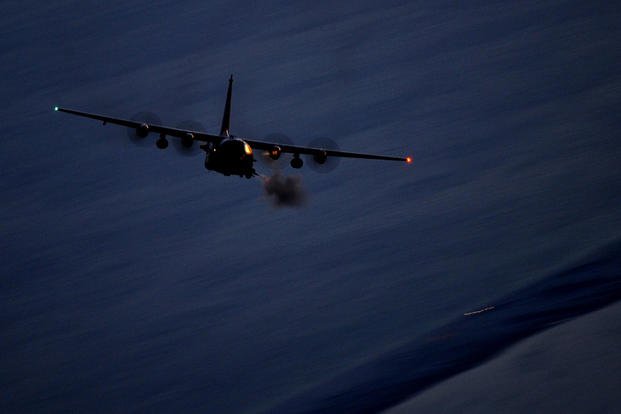The crew of the AC-103U gunship circled the target for more than an hour, disbelieving that this was the building they were supposed to hit and repeatedly asking for confirmation from the Special Forces team on the ground.
The difference was that the aircrew could see the building, which turned out to be the Medecins Sans Frontiere (Doctors Without Borders) Trauma Center in Kunduz, and the Joint Tactical Air Controller (JTAC) with the Special Forces could not. The target was out of their line of sight.
The aircrew's commander finally relented and ordered the strike. For 30 minutes and nine seconds, the AC-103U unleashed a torrent of 105mm and 40mm cannon fire, and gatling gun fire, on the hospital and its grounds, according to the 3,000-page U.S. Central Command investigation.
Related Story: 'Fog of War' Led to Deadly Kunduz Hospital Strike
The report said that a total of 211 shells were fired, but the types of shells were redacted. The final casualty toll, which was still in dispute, was believed to be at least 42 dead and at least 128 wounded.
In the clinical and acronym-laden wording of the report, the tragedy was "due to several leaders' decisions or failures to act," but neither the U.S. aircrew nor the ground team were aware that they were "firing on a hospital throughout the course of the engagement."
The aircrew, however, had its doubts. The target the JTAC wanted hit was a building about 400 meters away from the hospital. He called up coordinates to the gunship, but the crew member operating the TV sensor determined that it was an open field.
After some back and forth communications, the aircrew then "identified a large complex 300 meters southwest from the grid location (the open field) and asked for confirmation" that it was the intended target. Fifteen seconds later, the aircrew was told that "the large complex was the correct compound" to be attacked, the investigation said.
For the next 10 minutes, the aircrew discussed the mission among themselves while observing the compound. They saw nine individuals walking about, not carrying weapons. They asked again for confirmation. They were told that "compound is under the control of the TB (Taliban)" and the individuals seen walking about were "hostile."
Still, the aircrew hesitated. After discussions about a "T-shaped building" and the shape of an arch on the wall of the compound, the aircrew sought confirmation one last time: "Looking again for clarification on the last. Break. Also looking for clarification on the building to be struck. Confirm it is the T-shaped building." The response from the ground was: "You are clear to engage," the investigation said.
"Before the impact of (redacted) final round on the MSF Trauma Center, several echelons of command were aware that the wrong compound was engaged, resulting in civilian deaths and the destruction of the main trauma center building," the investigation said.
-- Richard Sisk can be reached at richard.sisk@military.com



























